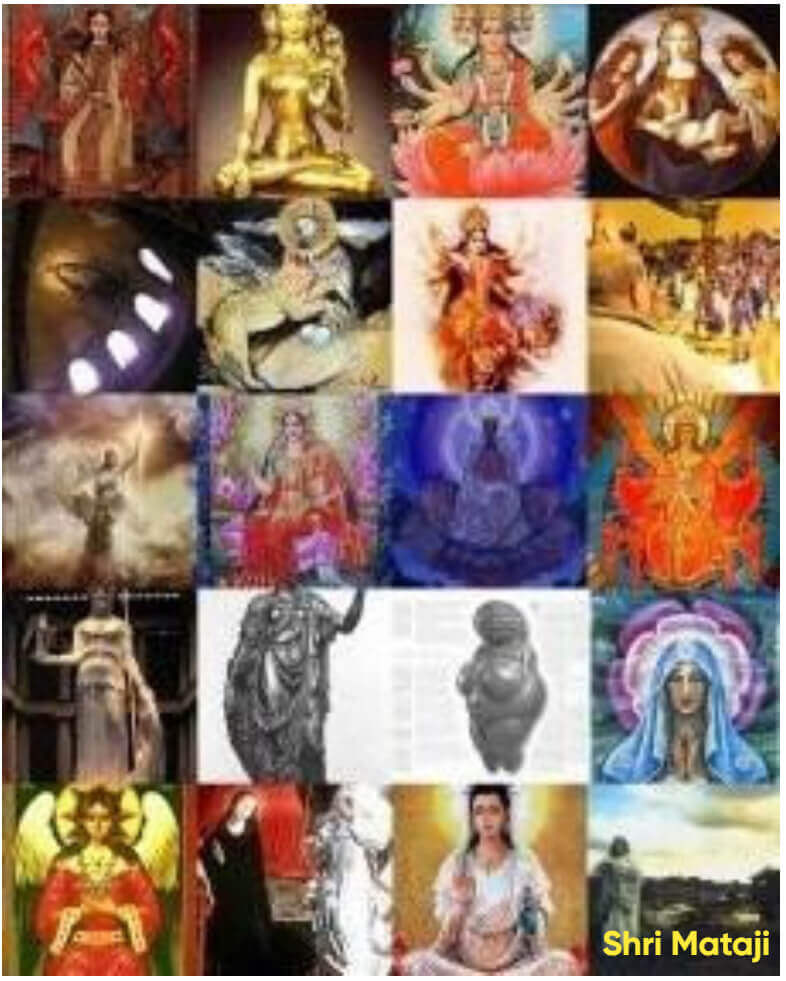An Academic Analysis of the Typology of Gurus in Hindu Thought
This page offers a piercing lens into the spiritual marketplace—where seekers must learn to discern between the liberating SadGuru, the exploitative fake guru, the universal ParamGuru within, and the teacher who imparts worldly knowledge. The SadGuru is self-realized, unattached, and devoted solely to the disciple’s union with the Divine. The fake guru is a merchant of mantra, building empires on ego and wealth. The ParamGuru is the inner light, the eternal guide who speaks through silence and scripture. And the subject expert, though valuable, cannot lead to liberation. The seeker must awaken Vivek—spiritual discrimination—to walk the razor’s edge between truth and illusion. For in the age of spiritual abundance, discernment is salvation.
Table of Contents
Abstract
This paper provides a comprehensive analysis of the concept of the guru in Hindu philosophy, with a particular focus on a four-fold typology: the SadGuru (real guru), the fake guru, the ParamGuru (universal guru), and the guru as a subject matter expert. Drawing upon a foundational text from the Gita Society [1] and a range of contemporary academic sources, this paper examines the defining characteristics of each guru type, the nature of the guru-disciple relationship, and the challenges of spiritual seeking in the modern era. The analysis highlights the critical importance of discernment in selecting a spiritual guide and explores the soteriological implications of the guru's role in the pursuit of self-realization and spiritual liberation. The paper also addresses the complex interplay between tradition and modernity in the context of guru-led spiritual movements and the ongoing scholarly discourse on authenticity and authority in religious leadership.
1. Introduction
The figure of the guru holds a central and revered position within the multifaceted landscape of Hindu religious and spiritual traditions. The term "guru," derived from Sanskrit, literally translates to "dispeller of darkness," signifying the guru's essential function as a spiritual preceptor who guides disciples from ignorance to enlightenment. As Jan Gonda notes, the guru is "the man who on account of his special knowledge and function was held to be a bearer of power conspicuous by his prestige, 'weight' and influence" [2]. This profound influence extends beyond mere instruction, often encompassing a deep, transformative relationship between the guru and the disciple (śiṣya). The guru-disciple relationship, or guru-śiṣya-paramparā, has historically served as the primary vehicle for the transmission of spiritual knowledge and the preservation of religious lineages.
However, the concept of the guru is far from monolithic. The spiritual marketplace, both in India and globally, is populated by a diverse array of teachers, masters, and guides, ranging from enlightened sages to charismatic charlatans. This diversity necessitates a framework for understanding and categorizing the different types of gurus that a spiritual seeker may encounter. A key text from the Gita Society, authored by Swami Ramsukh Das Ji Maharaj, provides a valuable four-fold typology of gurus: the SadGuru (the real guru), the fake guru, the ParamGuru (the universal guru), and the guru as a subject matter expert or teacher [1]. This classification offers a practical lens through which to analyze the complex and often contentious world of modern gurus.
This paper will undertake a detailed examination of this four-fold typology, drawing upon the insights of the Gita Society's text and supplementing them with a critical review of contemporary academic literature on the subject. The analysis will explore the defining characteristics of each guru type, the ethical and spiritual implications of their teachings, and the dynamics of the guru-disciple relationship in both traditional and modern contexts. The paper will also engage with the scholarly discourse on spiritual authenticity, the challenges of discerning a genuine guru, and the evolving role of the guru in a globalized world. By integrating traditional perspectives with academic research, this paper aims to provide a nuanced and comprehensive understanding of the multifaceted phenomenon of the guru in Hindu thought and practice.
2. The SadGuru: The Real Guru
The concept of the SadGuru, or the real guru, represents the ideal spiritual preceptor in Hindu thought. The term "SadGuru" (or "Satguru") literally means "true teacher." This is not merely a title but a descriptor of a state of being. A SadGuru is a self-realized master, one who has attained enlightenment and is capable of guiding others toward the same state of spiritual liberation [13]. The Gita Society's text emphasizes that the primary and sole purpose of a real guru is the spiritual welfare of the disciple [1]. This is a crucial distinction that sets the SadGuru apart from other types of teachers.
The defining characteristic of a SadGuru is their complete lack of personal desire or attachment. The text from the Gita Society states that a real saint "does not need anything from anybody and does not want to become a guru" [1]. Their actions are driven by LokaSangrah, the welfare of all, and they do not seek to attract followers for personal gain. This is in stark contrast to the modern phenomenon of gurus who actively cultivate a following and build organizations around themselves. The SadGuru's focus is on the disciple's connection with the divine, not with the guru's personality. The text poignantly states, "The duty of a guru is to bring a disciple (chela) close to god and help one establish a relationship with god, not establish a permanent relationship with the guru" [1].
This detachment from personal gain is also reflected in the SadGuru's relationship with material possessions. The Gita Society's text is unequivocal on this point: a real guru would never ask for money or a fee from a disciple, as they depend on God alone [1]. This principle is deeply rooted in Vedic tradition, which prohibits the sale of spiritual knowledge. The Rigveda states, "O mighty Lord of countless wealth, I will not sell thee for any price" (Rigved 8.01.05) [1]. The SadGuru is a giver, not a taker. While a disciple may choose to offer support out of gratitude, the SadGuru's guidance is never conditional on financial contributions.
The SadGuru's teachings are not their own but are a transmission of timeless spiritual truths. They act as a conduit for divine knowledge, guiding the disciple to discover the truth for themselves. The SadGuru does not create dependency but fosters spiritual autonomy. The ultimate goal is for the disciple to realize their own divine nature, their identity with the ultimate reality, or Brahman. The SadGuru is a guide who points the way, but the journey must be undertaken by the disciple themselves. This is why the Gita Society's text emphasizes the importance of Vivek, or spiritual discrimination, as a tool for understanding the real and the unreal [1]. The SadGuru awakens this faculty of discernment in the disciple, empowering them to navigate the spiritual path independently.
3. The Fake Guru: The Merchants of Spirituality
In stark contrast to the selfless ideal of the SadGuru, the spiritual landscape is also populated by what the Gita Society's text refers to as "fake gurus" [1]. These are individuals who adopt the guise of a spiritual master for personal gain, exploiting the genuine spiritual aspirations of seekers. The text warns that in the current age, "false gurus are abundant" and that they are essentially "merchants of mantra" who "take money from disciples to fulfill their personal material needs" [1]. This commercialization of spirituality is a recurring theme in the critique of fake gurus.
The primary motivation of a fake guru is not the spiritual welfare of the disciple but the aggrandizement of their own ego and the accumulation of wealth and power. The Gita Society's text provides a detailed list of the characteristics of a fake guru, which includes the desire to have many disciples, to build an ashram, and to gain fame [1]. These desires are seen as a clear indication that the guru is not self-realized and is, in fact, a slave to the very attachments that they claim to help others transcend. The text goes so far as to say that a guru who takes money from a disciple without leading them to self-knowledge "goes to hell for sure" [1].
The methods employed by fake gurus to attract and maintain a following are often based on manipulation and the creation of a personality cult. They may perform so-called miracles, make grandiose claims about their own spiritual status, and demand unquestioning obedience from their disciples. The Gita Society's text warns against gurus who give their pictures to be worshipped, as this is a sign that they are promoting devotion to themselves rather than to the divine [1]. The academic literature on the subject also highlights the dangers of such charismatic leaders. The study of "fake religion" and the "ordeals of authenticity" in religious studies provides a framework for understanding the dynamics of fraudulent spiritual movements [12].
The consequences of following a fake guru can be devastating, both spiritually and materially. Disciples may waste years of their lives in fruitless pursuit of a false ideal, and they may also be financially exploited. The Gita Society's text uses the powerful metaphor of a "boat made of stone" to describe the fate of a disciple who follows a greedy guru: both will inevitably drown [1]. The psychological and emotional damage can also be significant, as disciples may experience a profound sense of betrayal and disillusionment when the true nature of the guru is revealed.
The challenge for the spiritual seeker is to develop the discernment necessary to distinguish between a genuine SadGuru and a fake guru. The Gita Society's text emphasizes the importance of Vivek, or spiritual discrimination, in this process [1]. It advises seekers to be wary of any teacher who expects anything in return for their guidance, whether it be money, respect, or obedience. The true guru is a giver, not a taker, and their only concern is the spiritual liberation of the disciple.
4. The ParamGuru: The Universal Guru
The concept of the ParamGuru, or the universal guru, represents the highest and most abstract understanding of the guru principle in Hindu thought. The term "ParamGuru" literally means "supreme teacher" [12]. This is not a human guru but the divine principle of knowledge and enlightenment itself. The Gita Society's text explains that the ParamGuru is the ultimate source of all spiritual wisdom, the light of Jnaan (knowledge) that dispels ignorance and delusion [1]. This light comes automatically from Par-Brahm, the supreme reality, when the seeker's mind is purified by sincere spiritual practice (Saadhanaa), service (Sevaa), and surrender (Surrender) [1].
The ParamGuru is the inner guru, the divine spark within each individual that guides them toward self-realization. The Gita Society's text emphasizes that God is the guru of all [1]. This is a radical and empowering idea that shifts the focus of the spiritual search from an external human guru to the internal divine presence. The text states, "If one takes God and Gita as their guru, there is no difficulty" [1]. This suggests that the ultimate spiritual authority resides not in any human being but in the divine itself, which can be accessed through sacred texts like the Bhagavad Gita and through sincere devotion.
The academic literature also recognizes the concept of the ParamGuru as the "teacher's teacher" [11]. This is the ultimate source of the spiritual lineage, the original guru from whom all subsequent gurus derive their authority. In this sense, the ParamGuru is the embodiment of the timeless spiritual tradition, the eternal wisdom that is passed down through the generations. The concept of the ParamGuru serves as a reminder that the true guru is not a personality but a principle, not an individual but the universal consciousness.
The practical implication of the concept of the ParamGuru is that it encourages self-reliance and inner exploration. While a human guru can be a valuable guide, the ultimate goal is to connect with the inner ParamGuru. This is why the Gita Society's text advises seekers to use their Vivek, or spiritual discrimination, to understand the real and the unreal [1]. The ParamGuru is the source of this Vivek, the inner voice of wisdom that guides the seeker on their journey. By turning inward and connecting with the ParamGuru, the seeker can find the guidance they need to achieve spiritual liberation.
5. The Guru as a Subject Matter Expert
The fourth category of guru discussed in the Gita Society's text is the guru as a subject matter expert or teacher [1]. This is the most common and accessible understanding of the term "guru." In this context, a guru is anyone who possesses knowledge or expertise in a particular field and is capable of transmitting that knowledge to others. This can be a teacher in a school, a professor in a university, a mentor in a profession, or anyone who serves as a guide and instructor in a specific domain of life.
The Gita Society's text acknowledges the importance of such gurus, stating that "without a guru (teacher) no knowledge is ever possible" [1]. This highlights the essential role of teachers in the acquisition of knowledge and skills. However, the text also draws a clear distinction between a subject matter expert and a SadGuru. While a subject matter expert can provide valuable knowledge and guidance in their area of expertise, they are not necessarily self-realized and cannot lead a disciple to spiritual liberation.
The academic literature also recognizes this distinction. The term "guru" is often used in a secular context to refer to an expert or a leading figure in a particular field. However, this is a dilution of the original spiritual meaning of the term. While a subject matter expert can be a valuable guide in the material world, they should not be confused with a spiritual master who can guide a disciple in the inner world.
The danger lies in conflating these two types of gurus. A person may be a brilliant scientist, a talented artist, or a successful businessperson, but this does not qualify them to be a spiritual guide. The Gita Society's text warns against the tendency to deify subject matter experts and to seek spiritual guidance from those who are not qualified to give it. The text advises seekers to use their Vivek, or spiritual discrimination, to discern the appropriate role of each type of guru in their lives [1]. A subject matter expert can be a valuable resource for learning and personal development, but the ultimate spiritual guidance must come from a SadGuru or from the inner ParamGuru.
6. Conclusion
The four-fold typology of gurus presented in the Gita Society's text provides a valuable framework for navigating the complex and often confusing world of modern spirituality. By distinguishing between the SadGuru, the fake guru, the ParamGuru, and the guru as a subject matter expert, the spiritual seeker can develop the discernment necessary to make informed choices on their spiritual journey. The SadGuru represents the selfless ideal of the enlightened master, while the fake guru serves as a cautionary tale about the dangers of commercialized spirituality. The ParamGuru points to the ultimate source of spiritual wisdom within each individual, and the guru as a subject matter expert highlights the importance of teachers in all aspects of life.
The academic literature on the subject reinforces the importance of these distinctions. Scholars have explored the challenges of spiritual authenticity, the dynamics of the guru-disciple relationship, and the evolving role of the guru in a globalized world. The consensus is that the path to spiritual realization requires not only a sincere desire for truth but also a critical and discerning mind. The spiritual seeker must be willing to question, to investigate, and to take responsibility for their own spiritual journey.
Ultimately, the choice of a guru is a deeply personal one. There is no one-size-fits-all answer, and what works for one person may not work for another. However, by understanding the different types of gurus and by cultivating the faculty of Vivek, or spiritual discrimination, the seeker can increase their chances of finding a genuine guide who can help them on their path to self-realization. The journey may be long and arduous, but with the right guidance and a sincere heart, the ultimate goal of spiritual liberation is within reach.


